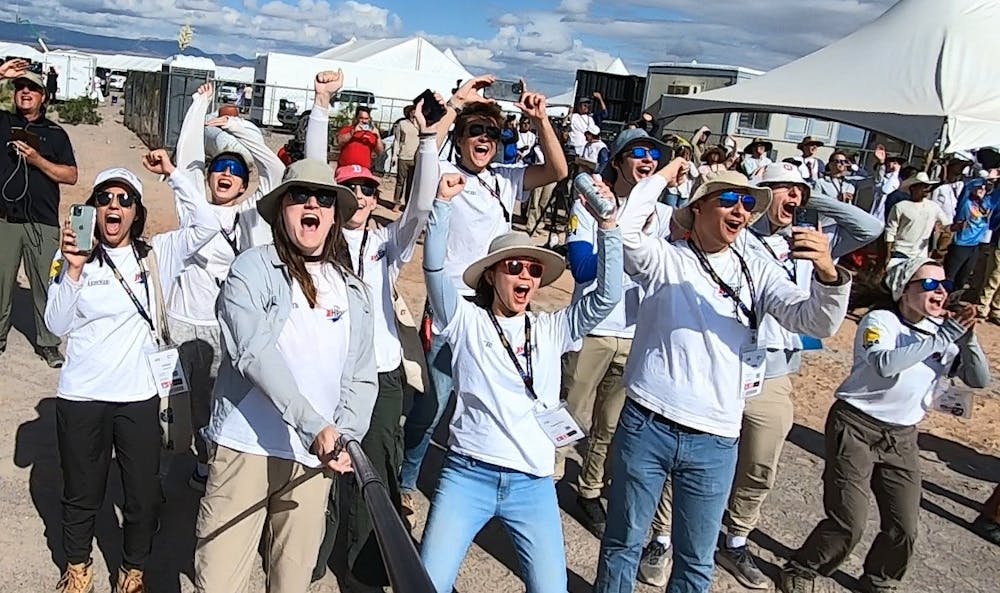
Penn Aerospace Club’s High Powered Rocketry competed in the Spaceport America Cup in New Mexico last month. (Photo by Penn Aerospace Club)
Penn Aerospace Club’s High Powered Rocketry team represented the University at the Spaceport America Cup in New Mexico last month.
The 2024 rocket team successfully launched their first rocket at this year’s competition, which took place on June 20. The team of students was led by President and rising Engineering junior Kayla Bleier. The Spaceport America Cup is the largest intercollegiate rocket engineering competition for student engineers, with 152 teams participating this year.
The team had been working on the H.Odyssey rocket since the beginning of the fall 2023 semester. The solid propellant rocket was built to compete in the 10,000-foot commercial-off-the-shelf category. It consists of a Cesaroni M3400 motor, which was bought from the model rocketry market and has 4,000 newtons of thrust.
On the day of the competition, the team gathered to see their rocket being launched for the first time with no previous test launches. Even though it was their pilot liftoff, according to team member Attila Tuba, it was a success.
“The rocket reached an apogee of 12,489 feet. Flight and recovery were nominal, we recovered it in one piece! It can certainly fly again without major modifications,” Tuba said. “We were very happy and overjoyed at the moment of launch; it’s not everyday you can see a year’s work go transonic at Mach 0.7!”
Collaborating with Penn faculty and external suppliers, the team found many sources of mentorship throughout their engineering process.
“We’ve learned that this amateur rocketry community around the country is very excited for new people to join,” Bleier said, explaining that “mom-and-pop store owners … [are] really happy to explain everything to you” when buying “certain part[s].”
Alongside Penn students and faculty, other teams also offered a helping hand.
“We actually ran into a major issue hours before our scheduled launch and needed to replace a bulkhead that supported one of our parachutes. We couldn’t have done it without help from our flyer of record, Mike Nay,” mechanical lead and rising Engineering junior Ashna Khemani explained. “Cornell Rocketry was also kind enough to give us a replacement part, and Case Western’s team also gave us some really great advice on manufacturing and team organization.”
The rocketry team also engaged in independent research, as they had to work with limited materials, little rocketry experience, and a tight budget. The team bought pre-cut tubes and used “simulation software” to help build the rocket.
Bleier attributed the team’s success to her teammates, saying “I think our success is due to everyone’s determination.” Even though everyone was learning, her team put in “a lot of time and research,” Bleier remarked.
“Given we were in our first year [of] competing, we had the smallest budget of all teams, with the next team having five times our budget,” Tuba shared. “If we aim at representing the University in further installments of [the Spaceport America Cup], money certainly has to be a talking point.”
The Penn High Powered Rocketry team plans to compete in the 2025 cup, according to Khemani.
“We ate it up,” Khemani said. “I’m definitely excited to come back next year with a bigger team and a bigger rocket!”
The Daily Pennsylvanian is an independent, student-run newspaper. Please consider making a donation to support the coverage that shapes the University. Your generosity ensures a future of strong journalism at Penn.
Donate







